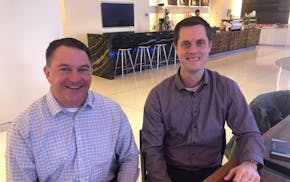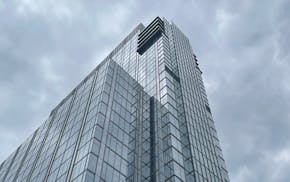Gem-Ash, which has engineered an innovative way to make money from garbage, is expanding its six-year-old operation at a landfill in Rosemount.
The business recovers small pieces of valuable metals that escape recycling and survive incineration at the Hennepin County garbage-to-energy plant in downtown Minneapolis.
Gem-Ash "mines" the ash that has been buried for years at the Rosemount landfill. It has extracted more than 70 million pounds of steel, aluminum, silver, bronze, even a little gold, and a lot of other stuff of varying value. The work also winds up conserving landfill space.
"We'll process up to 100,000 tons this year and reduce the landfill mass by 7.6%," said Jerry Goodwald, a former steel industry engineer who started Gem-Ash in 2015. "This has been a good year. Revenue and profits are up. There are financial and environmental benefits. We also pay rent [to the landfill operator] and our costs are up."
Gem-Ash, with seven workers, has generated millions of dollars in value, including for the landfill owner and Hennepin County, that would otherwise be buried. The revenue of $3 million or so annually varies depending on commodity prices.
Gem-Ash recently completed a six-figure expansion for a third processing line that enables the company to recover more metals that otherwise would return to the landfill.
C.J. Goodwald, Jerry's son and also a mechanical engineer, designed the additional line.
"We needed to recover more metal on an ongoing basis," Jerry Goodwald said. "The third line allow us to spread out the material more."
He said that the additional line enables more valuable metals to be found and extracted.
"The highest concentration of these metals is found in the smaller particulate of the ash," Goodwald said. "It's just very difficult to extract."
That means more recovery of small bits, under 6 millimeters in size, of aluminum, copper, brass, gold, silver, platinum and palladium.
The precious metals that Gem-Ash extracts are sent by sea to processors in the Netherlands. Those tend to be fused through incineration with wood, plastic or cement. And European extractors get a higher recovery of those metals thanks to more experience with incineration and recovery.
"They pay me more money," Goodwald said. "Most of the steel we recover we sell domestically.''
Gem-Ash is a small pioneer in a tough, dirty business that has gotten a bad name among some of the 100-plus U.S. garbage-to-energy incinerators.
A European company failed trying to do this at several U.S. sites, including in Minnesota. In part, that's because European ash is treated differently: The "bottom ash" is separated from the "fly ash" during incineration.
In U.S. plants, the ashes are combined for landfill. And the ash Gem-Ash processes tends to be stickier because much of it has been buried at Rosemount for years, and Minnesota weather also means it can be wet.
Goodwald's completed process is being watched by scientists at Florida State University and a couple of research institutes in Europe. He hopes the technology can be expanded elsewhere in the United States.
The Hennepin Energy Recovery Center (HERC) is considered better than landfilling by waste experts. It burns 365,000 tons of waste annually to create steam heat for downtown and enough electricity to power hundreds of houses. That reduces what is landfilled.
The county says about 45% of the waste generated in Hennepin County annually is recycled or composted. Further, more than 11,000 tons of scrap metal is recovered from the waste stream delivered to HERC before the garbage is burned.
Reusing and recycling products takes less energy than burning them. And there are fewer emissions when aluminum, glass and plastic are used to make new products.
Gem-Ash is the last chance for that stuff.
Jerry Goodwald, 63, worked for years as an engineer and executive for the former North Star Steel and Gerdau Steel.
A decade ago, Goodwald was responsible for a Texas steel-shredding operation that annually tore apart more than 14 million cars. In addition to steel and plastic, each vehicle yielded an average of $1.25 wedged in seats that was removed before the vehicles were shredded. Gem-Ash collects $2,000 a month in change at Rosemount.
Prof. Tim Townsend, an environmental engineer at the University of of Florida who is watching Goodwald and other pioneers in the garbage-recovery trade, said, "Jerry just started from scratch and has developed a system that works pretty well.''

St. Anthony: 'Patient' investing paying off for St. Paul's Hill Capital

Jennifer Smith, leader of Burnsville's Innovative Office Solutions, has died

St. Anthony: Medical professions in Minnesota need more people of color in their ranks



